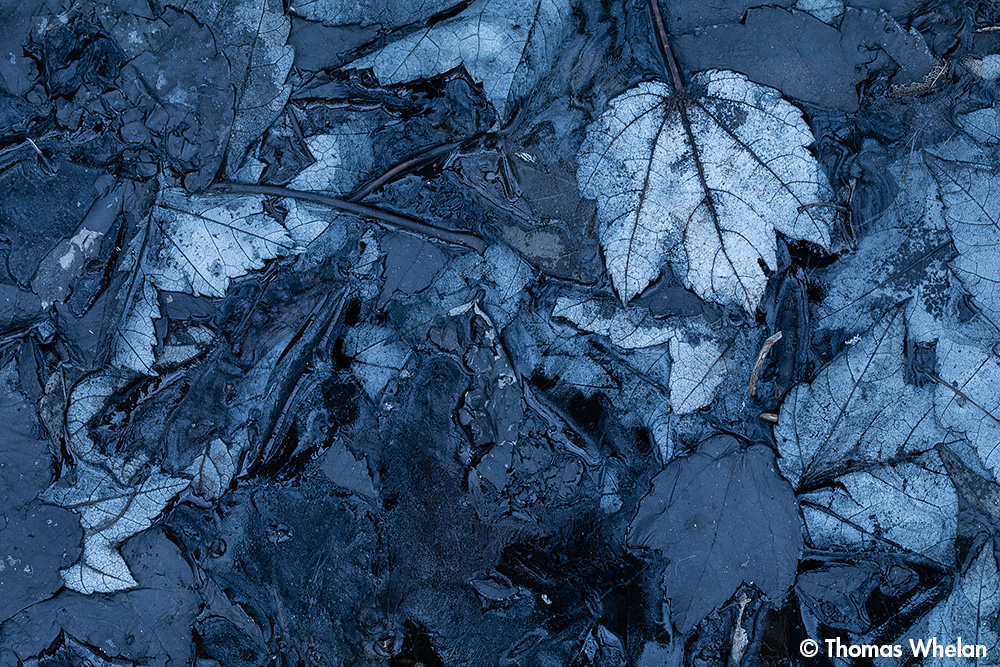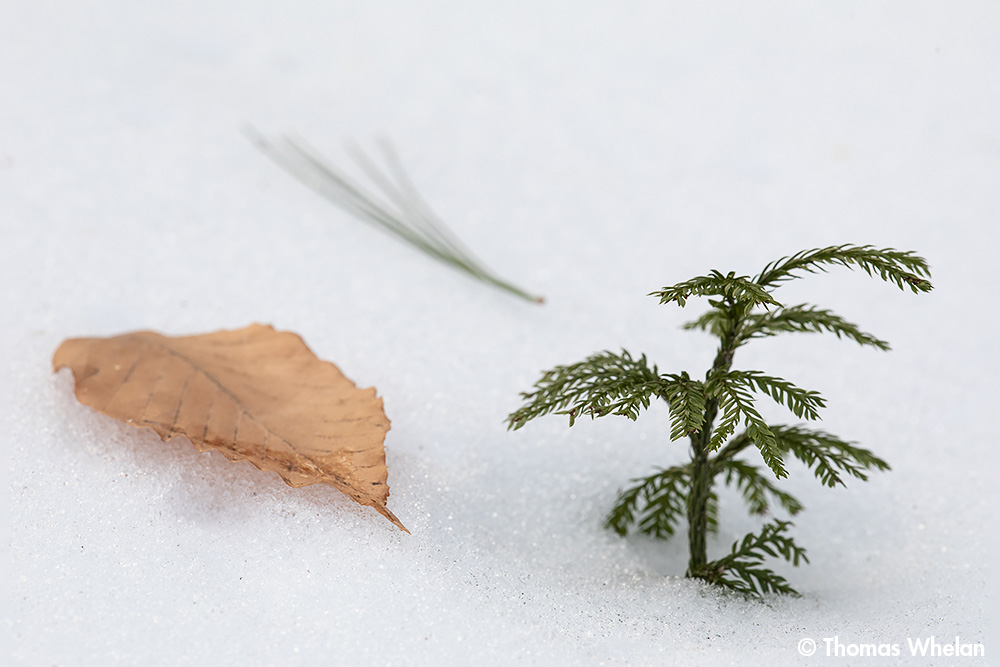Winter: dark and light
Here are two contrasting views of the forest floor in winter: the first is frozen leaves on a wetland forest floor, the second is snowy, with tree-clubmoss, a beech leaf, and pine needles.
These came from two places, one a swampy woods of maple and birch, and another a mature forest of American Beech, pine, and oak. I don’t know what process robbed the leaves of their brown color and gave them that bluish hue. I’ve always loved tree-clubmoss (a Dendrolycopodium species, not sure which one) and the way it emerges from a light snowfall. Beech saplings tend not to lose their leaves, so the snow always has a few newly fallen ones.



I, too, wondered about the blue cast in the first photo. In the second picture the pine needle cluster is completely out of focus and seems like a ghost.
The blue cast isn’t a white balance issue, I used a shade value that reduces blue. I like the out of focus look of the needles, but not all will.
I know a photographer, virtually that is, who photographs a lot of blue leaves and grasses out in Colorado. Here’s a sample. I think it’s just something in their chemistry that reflects the blue of ambient light. That photograph reminded me of a shot I did last year about this time with skunk cabbage but not the blue part.
The oof pine needles seems right to me. In focus would have distracted and not being there at all I think would leave the composition incomplete.I like beech leaves in the winter for their retention of color although that fades as winter wears on.
I know Dan virtually as well. The blue in his images is from a blue sky, perhaps that’s the cause of the blue in this image, taken in late afternoon. That’s the way I see the role of the needles :).
Sometimes the shorthand photographers use leaves me puzzled. When I saw the ‘oof’ in Steve’s comment, I thought it was an abbreviated expression of surprise: a mis-spelled half of the Norwegian “Uff da!” Finally, I got it. I guess I’m one of those who would have preferred the pine needles in focus. I’m not sure why, except that it feels like an incomplete triangle this way. With the needles in focus, the triangle would have been more explicit.
I never would have guess that to be club-moss. I would have assumed it was a pine seedling of some sort. American beech makes it into East Texas; one of our native orchids can be found beneath them.
I’ve seen this club moss before, but I hadn’t tried to identify it before. There are many species, and a number with a tree-like appearance, I’d have to go back and observe more closely to sort out the species.
Out-of-focus imagery is a matter of taste. I like the look, and for this image, I would have had to resort to focus stacking (or moving the needles) to render the needles in focus. At this low angle at f/11, this is how the background looks; I also took an image of the same mini-scene at f/16 that was marginally different. So this was my choice :).
I enjoy out-of-focus images, too, and understand the hows and whys of this one. Still, every now and then an image gets posted that doesn’t appeal as much as most, and it’s always intriguing and fun to try to figure out why.
I value your opinion – I post images because I want to know what people think. For me, this one was about white (light) opposed to dark. Secondarily, it’s about receding focus, the moss mainly in focus, the leaf only partially, the needles not at all.
It’s water. In wet lands, the soil is even a bit blue. I think it is called marl, and it happens in exactly the habitat you describe. The water saturates the soil creating anaerobic conditions. In fact, it is one of the things wetland delineators look for when classifying a wetland.
Thanks for the explanation. I wondered if there was a chemical process involved. I just read a paper about wetland indicators, and as you say, black leaves are an indicator for a kind of wetland.
I particularly like the blue